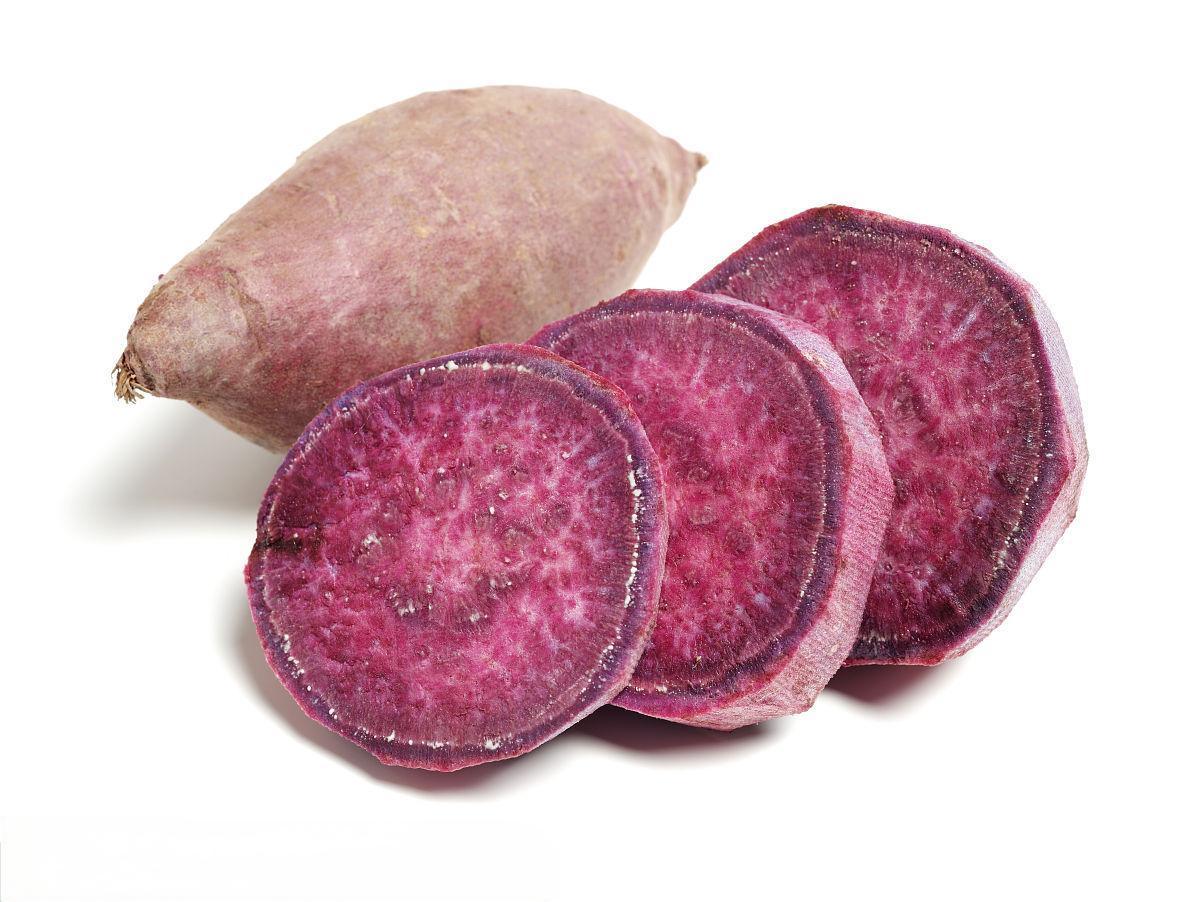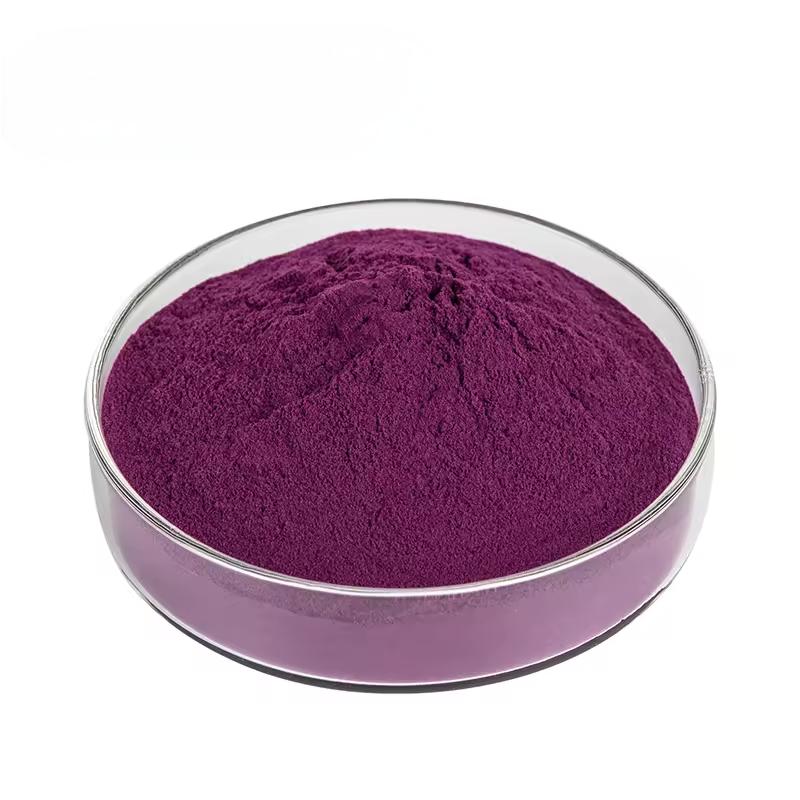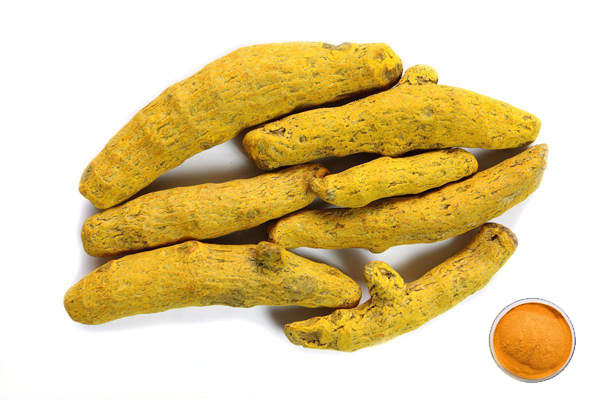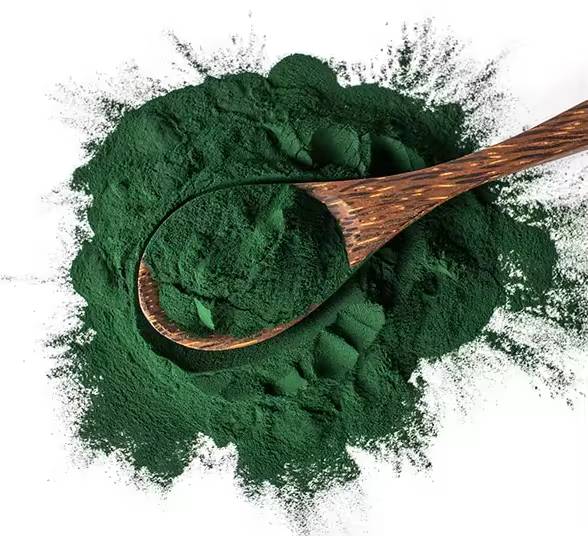Poudre pourpre de patate douce E60
Nom Latin :Solanum Tuberdsm
Source: racine de patate douce pourpre
Ingrédients actifs :Cyanidin-3-Glucoside
Spécification :E60
Méthode d’essai :UV
Apparence: poudre Fine pourpre foncé
Résidu de Pesticide: conforme à la norme (ce) No 396/2005
- Description Description
- Fiche technique
- Certificat de formation
-
Qu’est-ce que la poudre de patate douce pourpre E60 E?
Le pigment pourpre de patate douce est un pigment rouge naturel d’anthocyane extrait des tiges et des feuilles des racines tubéreuses de la patate douce pourpre, un genre de patate douce. Il est lumineux et naturel de couleur, non-toxique, et n’a aucune odeur spéciale. Il a de nombreuses fonctions nutritionnelles, pharmacologiques et de soins de santé, et est un colorant alimentaire naturel idéal. Les molécules de pigment pourpres de patate douce sont des molécules de pigment acylées avec une forte stabilité.
Purple sweet potato red pigment is a water-soluble pigment, it belongs to the anthocyanin class of substances, from anthocyanin and sugar glycosidation reaction. Its solution liquid is bright and translucent deep red color, without the bad smell which is difficult to get rid of in the products of red pigment of kale and carotene. It can be used in the production of beverages, fruit wines, fancy colored milk and other food products.
La poudre de patate douce pourpre E60 fournie par la technologie Greenspring est un additif alimentaire fabriqué à partir de tubercules de patate douce pourpre frais, qui est extrait et raffiné avec de l’eau ou de l’éthanol solution aqueuse contenant de l’acide citrique et d’autres acides. Il se présente sous forme de liquide, de poudre ou de granule rouge à violet-noir, sans impuretés visibles à l’œil nu. Le principal composant colorant du pigment violet de la patate douce est l’anthocyane, dont les principaux ligands d’anthocyane sont le bleuet et la paéoniflorine. Il a la bonne résistance thermique et la résistance légère.
Fondée en 2000, Green Spring est une principale société de biotechnologie en Chine, qui s’est engagée à rechercher et à fournir des extraits de plantes de haute qualité. Green Spring organise sa production selon les normes de qualité ISO, HACCP et autres et met en œuvre les normes internationales les plus élevées de l’industrie en conformité avec ue EC396, ue 2023/915 et les normes les plus élevées de résidus de solvants. Il a 7 certificats, et 7 brevets, et ses produits sont vendus dans plus de 62 pays dans le monde entier, servant plus de 2450 clients et recevant des éloges. Il a obtenu Halal, casher, COSMOS, BRC, IFS, FDA, ISO et de nombreux autres certificats. Nous pouvons fournir des rapports des essais faisant autorité de tiers.
Spécification:
Nom du produit
Patate douce pourpre
Nom Latin
Solanum Tuberdsm
Source:
Racine de patate douce pourpre
Ingrédients actifs
cyanidine-3-glucoside
spécification
E60
Méthode d’essai
UV
apparence
Violet foncé poudre Fine
Résidus de pesticides
Conforme à la norme (ce) n ° 396/2005
Règlement:
Il est conforme à la réglementation de l’ue.
Vous cherchez un devis?Benefits:
Anti-mutagenicity
Experimental studies on the mutagenicity of Salmonella typhimurium TA98 using purple sweet potato pigments revealed that purple sweet potato pigments had strong antimutagenic effects, inhibiting the mutagenic effects caused by heterocyclic amines, 3-amino-1,4-dimethyl-5hydro-pyrido-(4,3-b)indole, 3-amino-1-methyl-5hydro-pyrido-(4,3-b)indole, and 2- amino-3-methylimidazo(4,5-f)quinoline, among others, induced mutagenic effects. It was demonstrated that especially acylated anthocyanin glycosides were more antimutagenic, whereas deacylated anthocyanin glycosides showed significantly reduced antimutagenicity.
Antioxidant
Anthocyanins have strong antioxidant activity and are a better scavenger of oxygen radicals. The main active group for the antioxidant action of anthocyanins is the phenolic hydroxyl group in the molecule. Purple sweet potato pigment has several phenolic hydroxyl groups in its structure, which is a hydroxyl donor and also a free radical scavenger.
It not only binds to proteins to prevent peroxidation, but also provides protons to effectively scavenge lipid free radicals, cut off the chain reaction of lipid oxidation, and play a role in preventing lipid peroxidation. Jiang Pingping et al. conducted an in vitro antioxidant activity study on purple sweet potato anthocyanin and found that purple sweet potato anthocyanin showed considerable reducing power and hydroxyl radical scavenging ability in an in vitro model of reactive oxygen species, and it was positively proportional to the concentration. In addition, purple sweet potato pigments could resist Fe-triggered peroxidation of lecithin liposomes and inhibit erythrocyte haemolysis triggered by H2O2.
Ling Guanting et al. have compared the juice composition of orange sweet potato (rich in β-carotene) and purple sweet potato and found that purple sweet potato has strong superoxide dismutase (SOD) activity. Comparison of the free oxygen -O2 scavenging capacity of the two juices demonstrated that purple sweet potato juice had a stronger -O2 scavenging capacity than orange sweet potato juice, which is rich in β-carotene.
Relief of liver dysfunction
It was found that purple sweet potato pigment could significantly alleviate various hepatic dysfunctions induced by carbon tetrachloride in rats. After giving carbon tetrachloride to rats for 5 consecutive days, the test animals suffered from acute liver dysfunction, which led to changes in various liver function indexes.
After consuming the beverage containing purple sweet potato pigment, it could inhibit the rise of glutamic oxaloacetic transaminase (GOT) and glutamic propyltransaminase (GPT) in the serum of diseased rats. It also has a certain inhibitory ability to increase lactate dehydrogenase (LDH), sulfated barbituric acid reactive substances (TBA-Rs) in serum, TBA-Rs, and oxidized lipoproteins in the liver, thus reducing the liver injury caused by carbon tetrachloride. Some data show that the human liver function indexes are high, and in patients with a disease duration of less than 5 years, through the quantitative use of purple sweet potato extract, all liver function indexes have decreased, with an average decrease of about 20 percent.
Antihyperglycaemia
In a test on male mice using extracts from purple sweet potato, blood glucose concentrations in mice decreased by 16.5% after 30 min, and even the smallest dose of 10 mg/kg of diacyl anthocyanidin could reduce blood glucose levels in the body. The reason for the blood glucose-lowering effect of purple sweet potato pigments may be analyzed to be that purple sweet potato pigments cause a reduction in blood glucose concentration by producing an inhibitory effect on α-glucosidase.
Regulate Blood Pressure
Studies have shown that purple sweet potato pigment can inhibit the activity of angiotensin converting enzyme (ACE), which has the function of vascular end-constriction and reduces peripheral vascular resistance, thus lowering the efficacy of blood pressure. In the test of 45 volunteers taking purple sweet potato extract, 12 of them had systolic blood pressure >18.7 kPa (140 mmHg), diastolic blood pressure >12.0 kPa (90 mmHg), after drinking for 44 days, 120 ml per day, the systolic blood pressure fell by an average of 10-20 mmHg, diastolic blood pressure fell by an average of 5 mmHg, the effect of lowering blood pressure is obvious.
Applications:
In the Food Field:
Purple sweet potato red pigment has good heat resistance and is mainly used as a red to purple coloring agent for food and added to food. Since it is a natural non-toxic product, the dosage is not limited to meet the required coloring degree.
In Pharmaceutical:
The addition of colours is sometimes required in the production of medicines to make them easier to identify and distinguish. Natural purple sweet potato red pigment can be used to produce coloured tablets instead of synthetic colours.
In Cosmetics:
Purple sweet potato red pigment has antioxidant, free radical scavenging ability, and other functions, so skin care products containing purple sweet potato red pigment can inhibit the generation of peroxides caused by oxygen free radicals due to ultraviolet irradiation, and have a certain effect on improving skin inflammation, antioxidant and so on. In addition, it can replace the synthetic pigments now used in the industry, widely used in lipstick, rouge, shampoo, and other cosmetics.
-
Télécharger le document
Poudre pourpre de patate douce E60 COA
-
Télécharger le document
Cosmos 2023
Télécharger le documentHalal 2023
Télécharger le documentCasher 2023


 Anglais
Anglais français
français espagnol
espagnol russe
russe coréen
coréen japonais
japonais













